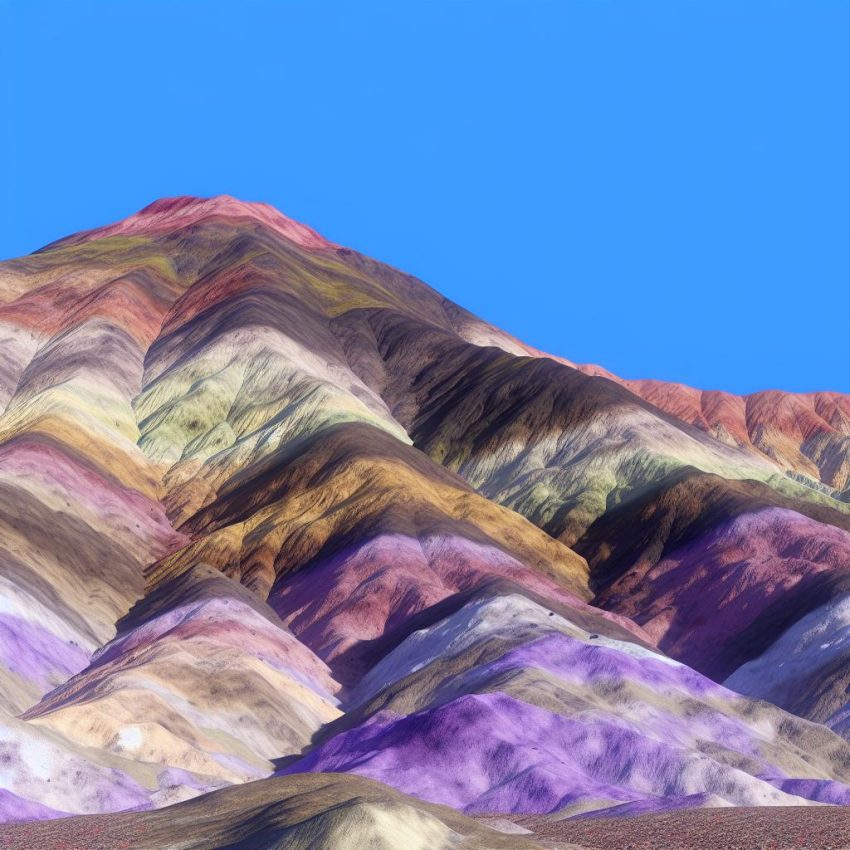Overview of the Cerro de los Siete Colores
Cerro de los Siete Colores, or “Hill of Seven Colors,” is a geological wonderland located in the enchanting town of Purmamarca. Situated in the northwestern province of Jujuy, Argentina, this remarkable hill captivates visitors with its vibrant array of colors. The multicolored strata of the hill serve as a picturesque backdrop, attracting tourists and geologists alike from all corners of the globe.
Geological Formation
The Cerro de los Siete Colores is the product of a complex geological history that extends over millions of years. This unique formation showcases a tapestry of colors as a result of its various sedimentary rock layers. Each layer corresponds to different geological periods and environmental conditions that the Earth has experienced over time. The striking hues found on the hill’s slopes stem from the processes of oxidation involving minerals and sediments. These processes give rise to the Cerro’s characteristic vivid reds, greens, yellows, and whites.
The Colors Explained
The mesmerizing colors of the Cerro de los Siete Colores are attributable to specific geological elements:
- Reds and Pinks: These shades arise from claystones rich in red hematite.
- Whites: Primarily composed of limestone, these layers provide a distinctive contrast to the hill’s darker hues.
- Greens and Yellows: The presence of sulfate minerals, including forms of copper, lends the greens and yellows to the hill’s canvas.
Historical Significance
The region encompassing the Cerro de los Siete Colores bears traces of human habitation that reach back thousands of years. The town of Purmamarca, whose name translates as “desert town” from the Aymara language, stands as a testament to a rich cultural history influenced by indigenous communities. Historically, this area held significance as a vital trade route within the Incan Empire. Despite the passage of time, the town retains much of its traditional architecture and cultural practices today.
Local Community and Culture
The community of Purmamarca is intricately woven with Quechua cultural traditions. This is evident in various forms of local expression, including craftwork, music, and festive celebrations. Visitors to the town have the opportunity to explore traditional markets, where they can acquire local handicrafts, textiles, and foods that embody regional customs. A journey to Purmamarca unveils a remarkable blend of ancient and contemporary lifestyles in this picturesque Andean setting.
Visiting Cerro de los Siete Colores
Cerro de los Siete Colores is situated a short distance from the central area of Purmamarca. To witness the hill in its full glory, it is recommended to visit during the early morning or late afternoon. This is when natural sunlight delicately amplifies the hill’s colors, making these times ideal for photography and observation.
Practical Information
Travelers can avail themselves of an assortment of accommodation options and services in Purmamarca. Choices include rustic lodgings and more modern facilities to suit varying preferences. Public transportation efficiently connects Purmamarca with nearby cities such as Jujuy and Salta, ensuring the hill is accessible for both day-trippers and those planning lengthier stays.
In essence, Cerro de los Siete Colores stands as a spectacular natural landmark, bearing a rich palette of colors and serving as a lens into the ancient cultures of the Andean region. A visit to this destination enables travelers to appreciate the harmonious blend of nature’s beauty and the vibrancy of local traditions. For additional travel details and accommodation information, you may find it useful to explore regional tourism resources, including the official site for Jujuy tourism.

